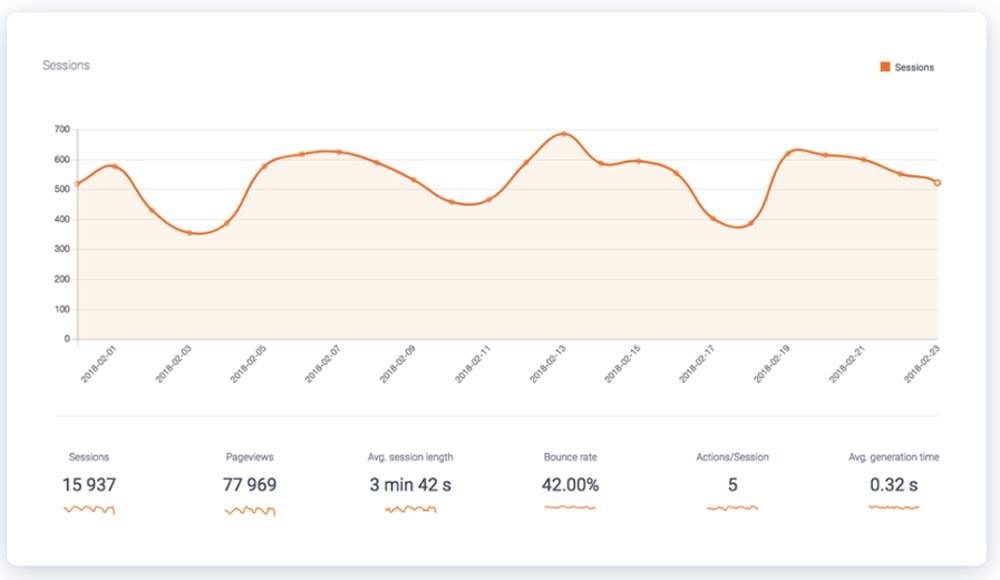
27 Jan 7 Powerful Design Tips for an International E-commerce Website
7 Powerful Design Tips for an International E-commerce Website
There is no question that technology has made it easier to conduct run and manage an online business.
Today, international e-commerce is the norm, and most businesses have online platforms that enable consumers to browse, select and purchase most products and services.
Keep in mind that the most significant advantage of having an e-commerce website is that you can cater to international customers.
While this presents a tremendous opportunity for most retailers and service providers, it is important to note that designing and managing an e-commerce portal that caters to customers across geographical borders requires attention to detail.
Wal-Mart, Amazon, Pepsi, and Apple may make it look easy, but in reality, international e-commerce needs a lot more work and preparation as compared to a website/business that only caters to local customers.
You cannot just decide one day that you will make an e-commerce website and will conduct business in South Africa or China etc.
You have to plan everything correctly, and you especially have to focus on the design and interface of your international e-commerce website.
Here are some pointers that may help you succeed if you intend to launch an international e-commerce website:
1 – Language

This one is pretty obvious.
Different people around the globe speak different languages.
If you want to target customers in different regions, you have to make sure you can communicate your message to them in the language they understand.
That is where language translation comes in.
The international market for e-commerce is vast, but you must provide content in the native language of your target audience.
Research suggests that people tend to spend more time on websites that are in their native language.
They are also more likely to buy a product from websites that are available in their language.
That is mainly because it becomes easier for them to browse and gather information about products and services if it’s in a language they understand.
Think about it: if your mother tongue is English, would you buy a product from a website which is in Russian or Mandarin?
Most likely not, unless you are fluent in multiple languages.
When designing an international e-commerce website, you should make sure that the site is translated into languages that are understood by your targeted customers.
However, don’t try to do it the easy way.
Google Translate might be useful for short and quick translations but if you are launching a website, make sure you get a professional translator to do the work for you.
Many people make the mistake of relying too much on language translation via artificial intelligence, but that can sometimes make big blunders that could negatively affect your reputation.
Therefore, make sure you communicate properly with your customers and make sure you do it right.
2 – User interface

UI is another crucial aspect of a useful website.
You should always make sure the user interface is easy to understand, navigate and process.
Your target audience should be able to find the information they need quickly and easily.
They should also be able to see sufficient details to be able to make a purchase decision.
One of the most common areas that e-commerce platforms often fail in is billing.
If you’re catering to customers across geographical boundaries, you need to understand how those regions work as well.
For example, if an e-commerce website caters to customers in the US and Canada, it needs to keep in mind that the US uses five-digit zip codes while Canada uses six alpha/numeric postal codes.
If the billing interface does not allow them to enter their information, they can get frustrated and simply abandon the idea of purchasing altogether.
There are many similar examples of basic errors that could put an e-commerce website entirely out of business.
You should also know how ordering is done in the targeted country.
People in Spain often have two last names while people in Japan use two distinct scripts when writing their names.
These might seem like minor details, but they can have a significant impact.
It might be a good idea to use a platform such as Shopify that offers international e-commerce solutions to cater to any audience wherever they live.
They can help businesses outline an international e-commerce strategy that would combine worldwide reach as well as enhance user experience.
3 – Watch your metrics

If you intend to conduct an e-commerce business internationally, you need to know your distances, weights, and measures.
For example, the US uses traditional weights and measures while the rest of the world uses the metric system.
Therefore, make sure your website accounts for these conversions.
Another critical thing to remember is sizes.
Shoe sizes differ in different countries; so do sizes for clothes.
Case in point: shoe sizes in North America usually range from 7-14 while in the UK and rest of Europe they are measured from 28-37.
If you want your customers to understand what you’re selling, you need to provide details that they understand.
Also, if you are going to state prices in USD, have an onsite app that converts the money into the local currency or lists both currencies.
Your customers need to know how much it will cost them in their own currency.
4 – Know the local laws

In many countries, especially Europe when you state your price you also have to include the sales tax or the value-added tax.
Since tax laws on consumer products tend to change all the time, you need to know them.
In Europe, they now have the GDPR, which has set aside new rules on how e-commerce companies can share and collect personal information online.
Also, one also needs to get consent from the consumer, if their personal data is going to be used.
In North America, many businesses have been collecting and sharing consumer data for years (e.g., Facebook, Amazon, Google, etc.) but this is no longer allowed in Europe.
This means when writing your e-commerce policy, you will need to state exactly how you intend to follow the rules set in place by the European community.
Penalties can be extremely high if you break these laws.
For example penalties for companies that are not compliant with GDPR rules can be quite steep.
5 – Take into account the local culture

When establishing an international e-commerce website, take into account the culture and style of the people you’re targeting.
You must speak in their style, and you should use images that are culturally relevant.
For example, if you are selling summer wear, an image of a model with a thong may not be appropriate for a website in the Middle East, but the same visual may be just fine for your customers in France.
The important thing is to project a professional image that will attract your audience.
The Japanese and Chinese are especially very finicky about images; Muslim countries can be very rigid and may ban your website altogether if you don’t take care.
It might be a good idea to get some insight into that particular region before you launch your e-commerce platform.
6 – Mobile friendly

Make your site mobile responsive as this is how a large majority of people shop today.
It is estimated that nearly 85% of the population in Europe and Asia use mobile devices for surfing, communicating and business.
Make sure your pages are optimised for mobiles, tablets, laptops, and desktops.
7 – Use efficient shipping

No e-commerce business can succeed if they do not have an efficient delivery system.
For a platform that provides services, management is easier since delivery can be made via email or an app such as Kindle, Grammarly, etc.
However, when you’re selling products that need to be delivered physically, you have to ensure your shipping system is efficient.
You can really expand your penetration in a particular market if you use efficient shipping solutions which are also cost-effective.
If the shipping costs are high, consumers may not order the item.
Therefore, think about how you will be delivering the product and how much time it would take before you launch an international e-business.
When consumers order items from an online source, they always want to know how they will be delivered, the cost and the time to deliver.
If you don’t have this information, it can be a big turn-off for your target audience.
Conclusion
No matter what type of international e-commerce website you develop, you will have to keep it clean, organised, and easy to navigate.
You will also need to provide prompt online customer service.
You should always provide complete contact information as it improves your credibility.
If you are on social media (which you should be if you want to succeed), make sure you provide links to your pages whether they are on Facebook, LinkedIn, Twitter or Instagram.
Remember, there are no shortcuts when making an international e-commerce business website.
Conducting business in different parts of the world is challenging.
If you want to do it right, you should conduct proper research, understand the local culture and norms, understand your target audience and provide them with the information they need in the language they understand.
The post 7 Powerful Design Tips for an International E-commerce Website is by Stuart and appeared first on Inkbot Design.


